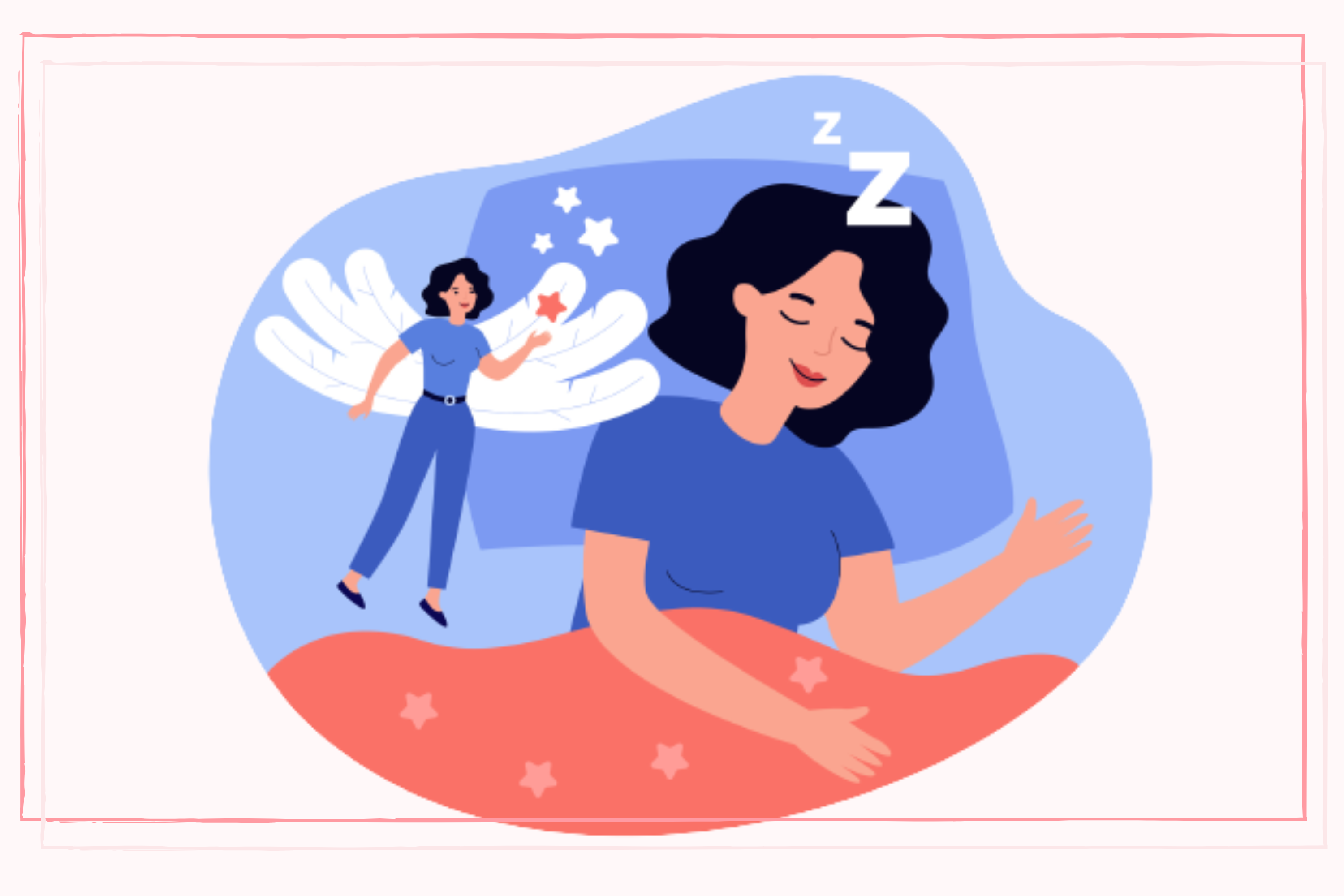How to lucid dream fast: It’s meaning and lucid dream techniques to try tonight
Learn how to lucid dream fast with our expert tips


Lucid dreams happen during the REM (Rapid Eye Movement) stage of sleep, which occurs around an hour and a half after dozing off. But how can you learn to lucid dream fast?
It goes without saying that our shut-eye is important, especially making sure we get the correct amount of deep sleep. Many people question what our dreams mean, like dreaming about someone specific or dreaming about being pregnant. But when it comes to lucid dreams, it's a lot more complicated as you are aware that you're dreaming.
Theresa Schnorbach, Sleep Expert at Emma Sleep explains: "Lucid dreaming has been around for thousands of years, but more recently has grown in popularity within some circles due to it being found, by some, to help with overcoming fears. The process involves tackling experiences that might otherwise cause distress, within the safety of a dream, in an attempt to 're-train' your brain."
What does it mean to lucid dream?
A lucid dream is a dream in which you are conscious and aware. So the dreamer knows that they're asleep and can therefore control things that happen in the dream.
Theresa Schnorbach, Sleep Expert at Emma Sleep says: "Put simply, a lucid dream is defined as a dream during which dreamers, while dreaming, are aware they are dreaming. Being conscious of yourself in a dream means you’re able to shape and control the experience of your dream - like directing your own movie in your mind - which can be quite enticing to some."
She adds: "The degree to which people can control their dreams varies from person to person so lucid dreaming can look different to everybody."
Rosie Osmun, certified sleep coach at Eachnight, explains: "In the ideal lucid dream, you’re not only aware you’re dreaming, but you’re also able to control the dream’s narrative. Like all dreams, lucid dreams can indicate a lot of things about what you’re feeling or thinking in your subconscious mind."
GoodtoKnow Newsletter
Parenting advice, hot topics, best buys and family finance tips delivered straight to your inbox.
The psychology behind lucid dreaming is quite complicated. After an individual falls asleep, they pass through three stages of non-REM sleep before beginning to dream. But when a person enters lucid dreaming, different processes occur that allow the dreamer to be aware that they are dreaming. While there are benefits to this state, there are also risks when it comes to lucid dreaming.
What causes lucid dreams?
The exact cause of lucid dreams is currently unknown, though it's something that is still being researched by psychologists and scientists, with several theories on the subject out there.
Sleep coach Rosie Osmun explains: "Lucid dreaming is still being studied by neuroscientists and sleep researchers, with exact causes still unknown. One theory is that people prone to lucid dreaming have a larger prefrontal cortex than the average person.
"Another proposed explanation is that lucid dreaming occurs when you dream outside of REM sleep, which was long thought to be the only sleep stage when a person dreamed," she adds.
"Part of the difficulty is that lucid dreaming, along with other types of dreaming, is tricky to study objectively. It usually requires a degree of self-reporting from study participants, even if technology such as a polysomnogram or an MRI scanner is being used."
Lucid dreaming isn’t something that everyone is able to experience. However, some research published by the National Library of Medicine suggests around half of all people have had a lucid dream at some time in their lives.
How to lucid dream fast: Expert tips
1. Use a dream journal
Jo Hemmings, psychologist for stairlift and home lift company Stannah explains how writing down your dreams can help speed up the process of learning to lucid dream fast. She says: "The simplest way would be to keep a dream journal, to write all your dreams down in, as both the writing down and the re reading can enhance the awareness and the likelihood of lucid dreams."
Dream Journal Notebook (Moons and Stars theme) - £5.65 | Amazon
A dream diary with guided prompts to record and track your dreams, interpretations and thoughts before sleeping. An ideal gift for you or others.
2. Try, try and try again
Emma Sleep expert Theresa Schnorbach says that a simple way to lucid dream fast is just to try. She says: "While it won’t work for everyone, perhaps the fastest way to induce a lucid dream is simply by trying to. Some people find that by compelling themselves to consciously interact with their dreams they are able to."
3. The WBTB technique
WBTB stands for Wake Back To Bed. Sleep guru Theresa Schnorbach explains how the method works: "This involves waking yourself - usually by setting an alarm - after 5 hours of sleep, staying awake for half an hour to a couple of hours, and then going back to sleep."
Though this might not be for everyone, as she warns: "Of course, as with anything new you introduce to your sleep pattern, it's a good idea to first assess whether your body is up to it as sleep deprivation or a lack of sleep can have serious impacts on physical and mental health. "
4. Take your time
Rosie Osmun, certified sleep coach at Eachnight explains that it won't be achievable if you put pressure on yourself. "If you’re a beginner with some time on your hands, learning to reality check over a period of weeks or months might be your best shot," she tells GoodtoKnow.
5. Meditation
Emma Sleep's Theresa Schnorbach says that meditation is a good technique to become more self aware, which can help you learn how to lucid dream.
"Meditation trains you to be more aware of yourself and your surroundings. For some people, meditating to a tone or beat can help; binaural beats and isochronic tones stimulate your pineal gland to produce the hormone melatonin, which helps regulate biological rhythms such as sleep and wake cycles.
"The sweet spot for the brain is generally around 40Hz," she adds. "Examples of these sounds can be found online for you to try out for yourself. "
6. The MILD technique
Eachnight's sleep coach Rosie Osmun explains how to use this method. She says: "The MILD Technique - Mnemonic Induction of Lucid Dreams - is basically training your brain to recognise that it’s dreaming by reminding yourself you’re going to recognise your dreams later. If you make the intention to remember you’re dreaming, your brain will be more likely to do it."
She adds: "To use this technique, first, think of a recent dream you can remember. Next, think about something odd or unreal from the dream - something that would never happen in real life; this will be your dream sign. Then, think about the dream sign as you fall asleep, maintaining awareness that if you see the dream sign, you will know for sure you’re dreaming.
"Try to fall asleep with the intention of recognising when you start to dream," she adds. "This can help up your likelihood of both seeing your dream sign and comprehending what it means."
Lucid dreams: Pros and cons
Pros
- Lucid dreams can help challenge phobias. Theresa Schnorbach, Sleep Expert at Emma Sleep explains: "One enjoyment many people find in lucid dreaming is challenging phobias through the dream."
- Mental health benefits. Psychologist Ieva Kubiliute says: "Research suggests that lucid dreaming can relieve anxiety. A few of my clients have reported that it
helps them confront anxiety-induced circumstances." Plenty of studies show that lucid dreams can help with anxiety and post-traumatic stress disorder. - They can help you overcome chronic nightmares. Rosie Osmun, certified sleep coach at Eachnight says: "Perhaps the biggest benefit to lucid dreaming is overcoming chronic nightmares. You might experience repetitive, long-term nightmares because of PTSD, certain medications, or mental disorders. If that’s the case, learning to lucid dream could help reduce nightmare frequency and/or intensity."
- Lucid dreams help with creativity. Jo Hemmings, psychologist for stairlift and home lift company Stannah says: "Studies have shown that it can improve creativity, cognitive performance and motor skills." And Dr. Brues states in his book that a study done in Liverpool showed lucid dreamers are more creative, more apt to problem-solving, and more successful in writing metaphors than non-lucid dreamers."
Cons
- Sleep Disruption. Rosie Osmun, certified sleep coach at Eachnight explains: "If you’re deliberately waking yourself in the middle of the night (like you would with the WBTB technique), you could wind up having a hard time going back to sleep. Interrupting your sleep every night long-term can turn into chronic fatigue or sleep deprivation."
- Sleep paralysis. Rosie Osmun says: "If you’re consistently waking yourself up out of REM sleep, you’re also upping your odds of experiencing sleep paralysis. Your body naturally maintains a state of immobility during REM so you don’t act out your dreams. If you wake during REM, you can sometimes experience a few second delay between regaining consciousness and regaining the ability to move."
- It could lead to increased anxiety and/or depression. While this is something lucid dreaming can help with, it could also have the opposite effect if it's disturbing your sleep. Rosie Osmun explains: "Sleep is vital for your mental health. Studies in adults and children have indicated sleep problems can both increase the risk and even contribute to the development of certain psychiatric disorders. If you’re constantly interrupting your sleep, it may up your chances for a depressive or nervous episode, since good sleep is essential for a stable, positive mood."
- They can be quite distressing - especially if you feel you have little control over the narrative or the outcome.
Video of the Week

Robyn is a freelance celebrity journalist with ten years experience in the industry. While studying for a degree in Media and Cultural Studies at London College of Communication, she did internships at Now and Heat magazines. After graduating, she landed a job at Star magazine, where she worked her way up to features editor. She then worked at Future as Deputy Celebrity Content Director across Woman, Woman’s Own, Woman’s Weekly and Woman & Home magazines.

